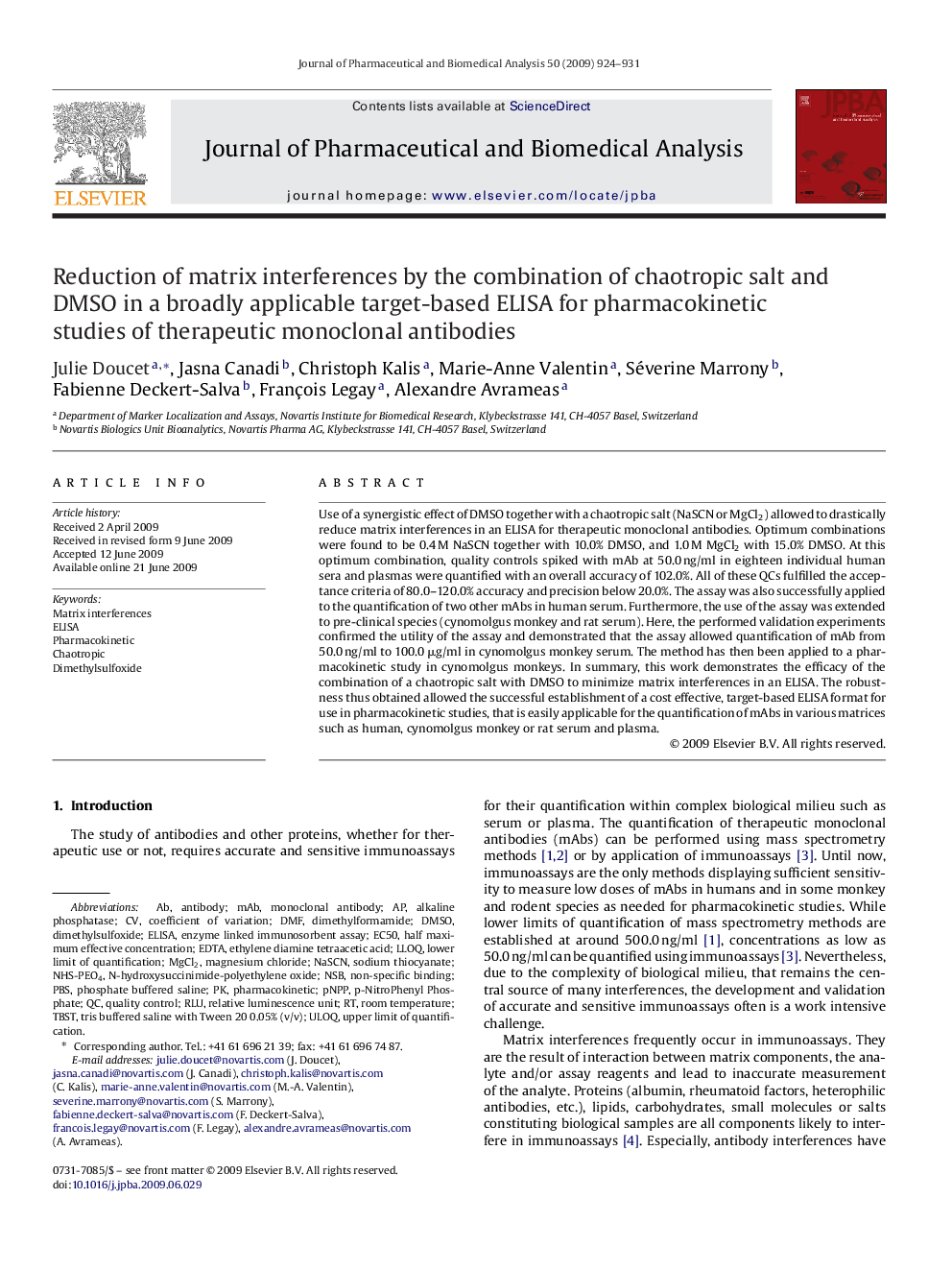| Article ID | Journal | Published Year | Pages | File Type |
|---|---|---|---|---|
| 1222664 | Journal of Pharmaceutical and Biomedical Analysis | 2009 | 8 Pages |
Use of a synergistic effect of DMSO together with a chaotropic salt (NaSCN or MgCl2) allowed to drastically reduce matrix interferences in an ELISA for therapeutic monoclonal antibodies. Optimum combinations were found to be 0.4 M NaSCN together with 10.0% DMSO, and 1.0 M MgCl2 with 15.0% DMSO. At this optimum combination, quality controls spiked with mAb at 50.0 ng/ml in eighteen individual human sera and plasmas were quantified with an overall accuracy of 102.0%. All of these QCs fulfilled the acceptance criteria of 80.0–120.0% accuracy and precision below 20.0%. The assay was also successfully applied to the quantification of two other mAbs in human serum. Furthermore, the use of the assay was extended to pre-clinical species (cynomolgus monkey and rat serum). Here, the performed validation experiments confirmed the utility of the assay and demonstrated that the assay allowed quantification of mAb from 50.0 ng/ml to 100.0 μg/ml in cynomolgus monkey serum. The method has then been applied to a pharmacokinetic study in cynomolgus monkeys. In summary, this work demonstrates the efficacy of the combination of a chaotropic salt with DMSO to minimize matrix interferences in an ELISA. The robustness thus obtained allowed the successful establishment of a cost effective, target-based ELISA format for use in pharmacokinetic studies, that is easily applicable for the quantification of mAbs in various matrices such as human, cynomolgus monkey or rat serum and plasma.
